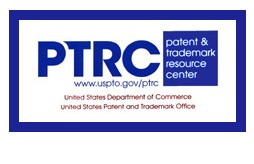Libraries
Patent Basics
What Is a Patent?
A patent for an invention is the grant of a property right to the inventor, issued by the United States Patent and Trademark Office. Generally, the term of a new patent is 20 years from the date on which the application for the patent was filed in the United States or, in special cases, from the date an earlier related application was filed, subject to the payment of maintenance fees. U.S. patent grants are effective only within the United States, U.S. territories, and U.S. possessions. Under certain circumstances, patent term extensions or adjustments may be available.
The right conferred by the patent grant is, in the language of the statute and of the grant itself, “the right to exclude others from making, using, offering for sale, or selling” the invention in the United States or “importing” the invention into the United States. What is granted is not the right to make, use, offer for sale, sell or import, but the right to exclude others from making, using, offering for sale, selling or importing the invention. Once a patent is issued, the patentee must enforce the patent without aid of the USPTO. (—USPTO website)
What Can Be Patented?
There are Three types of Patents
- Utility Patents
-
- Machine, Article of Manufacture, Process, Composition of Matter, Business Methods (since mid 90’s court decision)
- Any new, useful improvement of the above
- Term : 20 years from filing date
- Design Patents
-
- Granted for a new, original and ornamental design for an article of manufacture
- Only the appearance is protected
- Term : 14 years from the date the patent is granted
- Plant Patents
- Term: 20 years
- From USPTO.gov:
“The law also provides for the granting of a patent to anyone who has invented or discovered and asexually reproduced any distinct and new variety of plant, including cultivated sports, mutants, hybrids, and newly found seedlings, other than a tuber propagated plant or a plant found in an uncultivated state.
Asexually propagated plants are those that are reproduced by means other than from seeds, such as by the rooting of cuttings, by layering, budding, grafting, inarching, etc.”
One of the requirements for participating in the PTRC Program is housing physical copies of the plant patents. This is required because computer monitors and device display screens are not standardized as to representation of color, and color (e.g.: of leaf, flower, fruit, or stem) is often the defining characteristic that makes a particular cultivar "new" and patentable. Plant patents are located on Level 4 as part of the Federal Depository collection. Contact us for further information.

